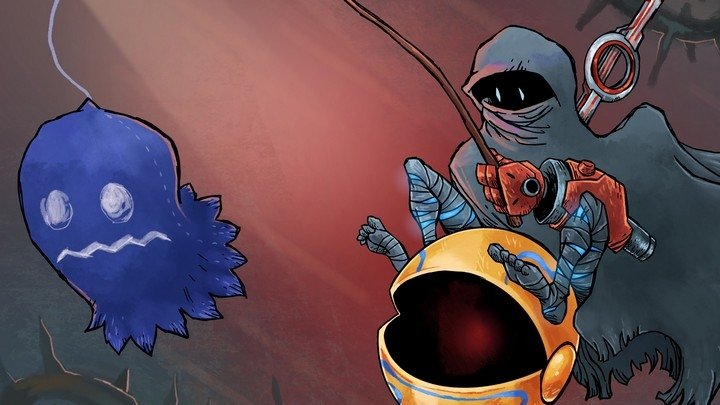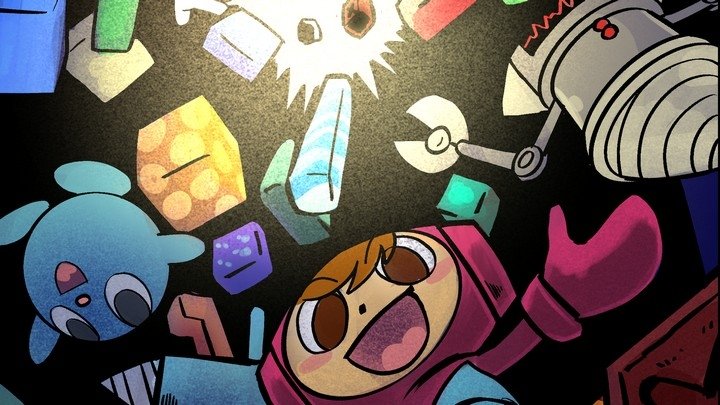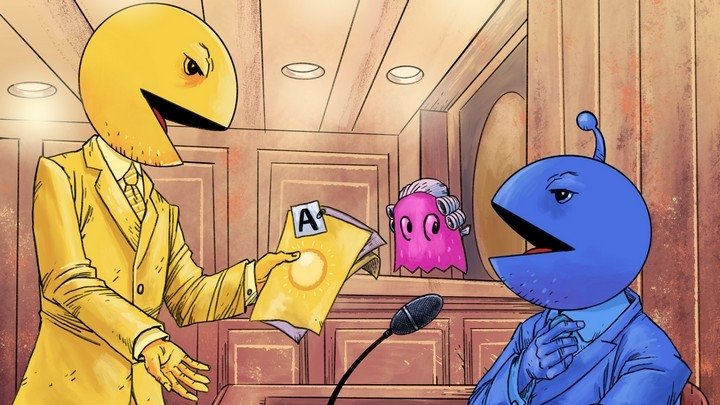NBA Jam: The Book: The Endorsement
Developer profiles and plenty of context make this tale of an arcade classic a must-read
Last summer while on vacation I happened upon a marvelous sight: a fully-operational NBA Jam arcade cabinet in a Seattle food court. Just seeing it was a delight for me, but I was equally pleased to find my children found it just as fascinating as I did, despite their complete lack of general basketball knowledge or awareness of the sheer magic that was the NBA in the early 1990s. It was a time when Michael Jordan was the most famous man in the world, a young Shaquille O'Neal was busting backboards, and the New York Knicks were, miraculously, honest-to-goodness contenders. And it was the perfect time for a larger-than-life arcade basketball game starring real-life players.
In his book NBA Jam Reyan Ali revisits the NBA and the arcades of the early 1990s to explain how the NBA Jam game came to be by interviewing the people responsible for its creation while giving insight into both the rise and decline of Midway*. When the book opened with the story of Atari and Pong, I was taken aback; surely the story of a 1993 arcade hit does not need to explain Pong to the reader? But the goal wasn't to outline every arcade game ever, but to point out the legacy of a sports game being the first hugely successful arcade game. After all, in the early days of the video game business, a sports game didn't need a far-out premise or even a fancy title: a basketball game could just be called Basketball and it would sell.
It's a shame that I can think of my favorite movies from 1993 and immediately have a basic grasp of who made them, but the same does not go for video games. It's so easy for me to recall that The Fugitive was directed by Andrew Davis and yet I cannot tell you the names of anyone who made World Heroes 2. For this reason I am grateful to Ali for taking the time to name and profile so many developers at Midway, both on the NBA Jam team and a number of their peers. By the end of the book I had a reasonable sense of who Mark Turmell, Sal Divita, Jon Hey, and Tim Kitzrow are (among others) and that glimpse enhances my appreciation of their work.
Through research, interviews, and good storytelling (the forward tells an in media res anecdote of NBA Jam being publicly playtested for the first time before Chapter 1 leaps back to the 1970s), Ali outlines all the key players and how they got to Midway*, covering a few of their high-profile early projects like Smash TV, Turmell's first creation after joining the company in 1989, and Arch Rivals, a thematically-similar 2-on-2 arcade basketball game made by another team that preceded NBA Jam by four years. As Ali put it, "Arch Rivals and its success established the blueprint of how to do arcade basketball, but Turmell wanted to make his game different."
Regarding the eponymous game itself, Ali's book covers nearly all aspects of its creation: from the negotiations with the NBA itself to the local hoopsters who stood in for all the professionals to the Second City actor whose commentary became so popular, real sports announcers borrowed his lines for actual NBA games. Ali also recaps the state of the NBA at the time so fans and non-fans alike can understand the key players and teams on the court when NBA Jam came to the arcades. The Chicago Bulls were in the midst of three-straight championships, but that didn't stop Turmell from giving his favorite team a secret advantage: "If the Bulls were playing the Pistons and made a last-second rally, Scottie Pippen’s stats would plummet," Ali writes.
NBA Jam was an arcade blockbuster, but like the Bulls' title runs of the 1990s, nothing lasts forever. Ali's book follows the game's success, its sequels, and its high-profile home console ports before detailing how the golden goose suddenly escaped from Midway's* grasp. Without the brand it created, Midway's* next arcade basketball game never reached the same heights as NBA Jam, nor did its attempts to make Jam-style games for other pro sports. The rapidly declining arcade market did the company no favors either.
Yet even as the profile of NBA Jam faded and the companies that shepherded it fell into ruin, NBA Jam as a property and, more significantly, as a game have stood the test of time. Even though every single player in the original NBA Jam has long since retired (a few have even passed away), its ability to entertain has not diminished in the slightest. Ali notes that modern NBA players and fans still recognize its legacy, and even complete novices - such as my children referenced above - find it hypnotic. Whether you were there in 1993 with quarters in hand as I was, or merely curious about the hype, I can recommend picking up NBA Jam from Boss Fight Books. It's a quick, fun read about a bonafide arcade classic, a miracle that cannot be duplicated yet remains potent forever.
*If you're like me and struggle with the distinction between Williams Electronics and Midway, this book does explain what happened and why the brands overlap so much!
(Disclosure: a copy of this book was provided to Retronauts free of charge)



